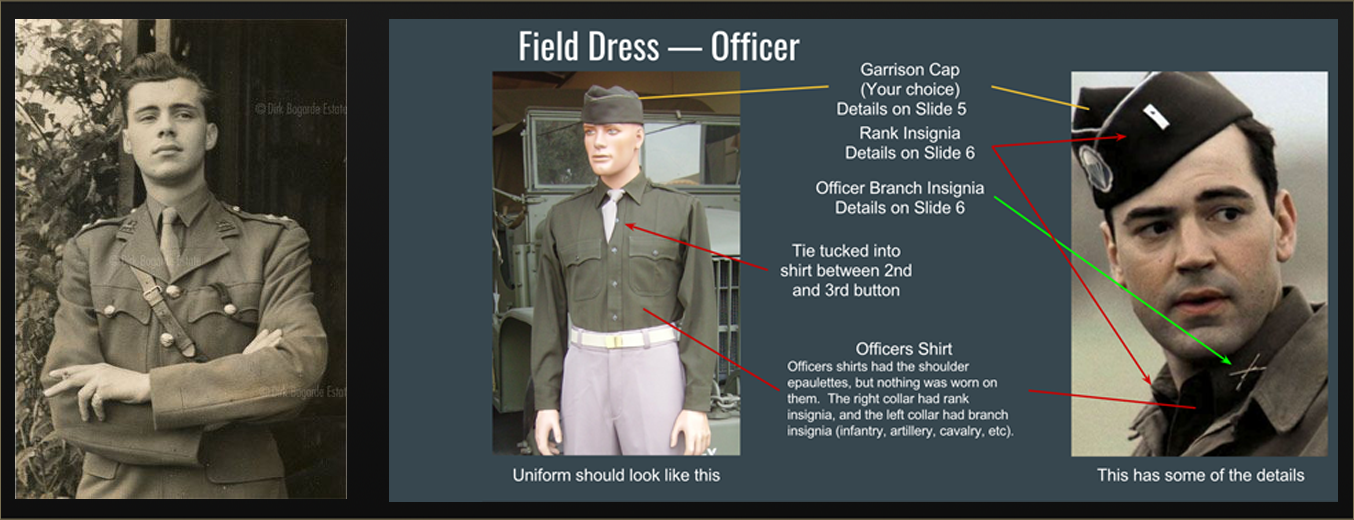

Hi, I’m Luke Hughes project lead On Burden of Command. Our two minute teaser video focused heavily on RPG aspects. But what about tactical combat?! While tactical details are still being worked out, today I can give you a high level impression by pointing to inspirations from cardboard. Hunh? Cardboard? Well IMHO a lot of creativity over the last few decades has come from the physical board game space (a future blog will cover digital influences). I feel privileged to “stand on the shoulders of giants” (well at least crouch). In this blog I will describe those influences and how they shape Burden of Command’s tactical design. The games below are by no means an exhaustive list, there are many other fine designs out there, these are just the ones that have had the most influence on me.
Most images below come from the marvelous BoardGameGeek site (check it out!).
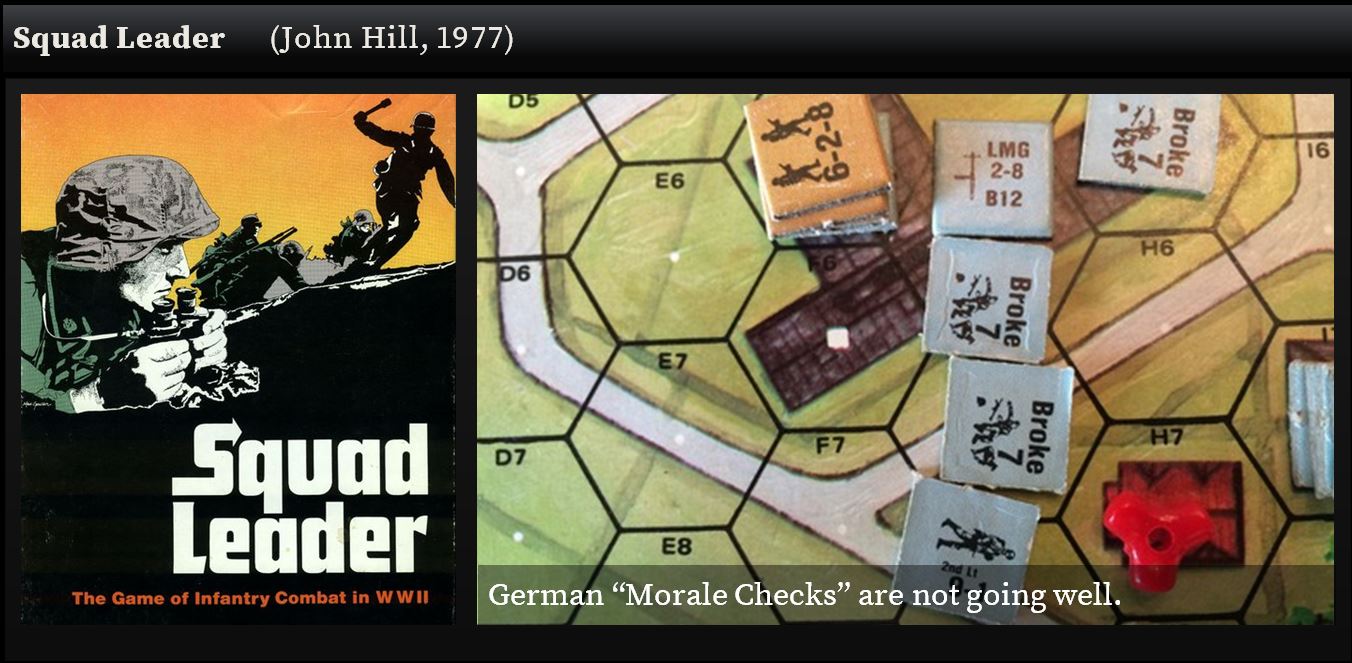
Squad Leader (1977) is the “ur” WWII tactical game. It spawned the still passionately followed Advanced Squad Leader and deeply influenced most subsequent turn based designs. Mechanically, your fire your squads — their fire ideally enhanced by leaders — at enemies to cause “Morale Checks” which upon failing lead them to be “broken” (ineffective) or even “routed” till rallied by leaders. Random events like machine guns jamming or troops going “berserk” add unexpected drama.
Influence #1 On Burden of Command: Leadership is Compelling: Managing human battlefield psychology (morale) through leaders makes for interesting gameplay. We broaden that model by adding Trust and Respect mechanics and probably attentional ones (fixation, narrowed field of view under suppression, and surprise). John Hill further recognized the key RPG aspect:
“Squad Leader was a success for one reason: it personalized the board game in a World War II environment. Take the “leaders,” or persons, away from it and it becomes a bore. Though this may sound surprising, the game has much in common with Dungeons & Dragons. In both games, things tend to go wrong, and being caught moving in the street by a heavy machinegun is like being caught by a people-eating dragon. Squad Leader was successful because, underneath all its World War II technology, it is an adventure game, indeed Dungeons & Dragons in the streets of Stalingrad.”
Influence #2: Emergent Stories Through Chaos: Making the battlefield psychological, making leaders explicitly present, and including random events means the battlefield becomes it’s own unscripted story generator (e.g., “remember that time when my last squad went berserk and charged through three hexes of withering enemy fire unscathed too finish off the bunkered MG and win the game?”). Game designers call this “emergent storytelling.”
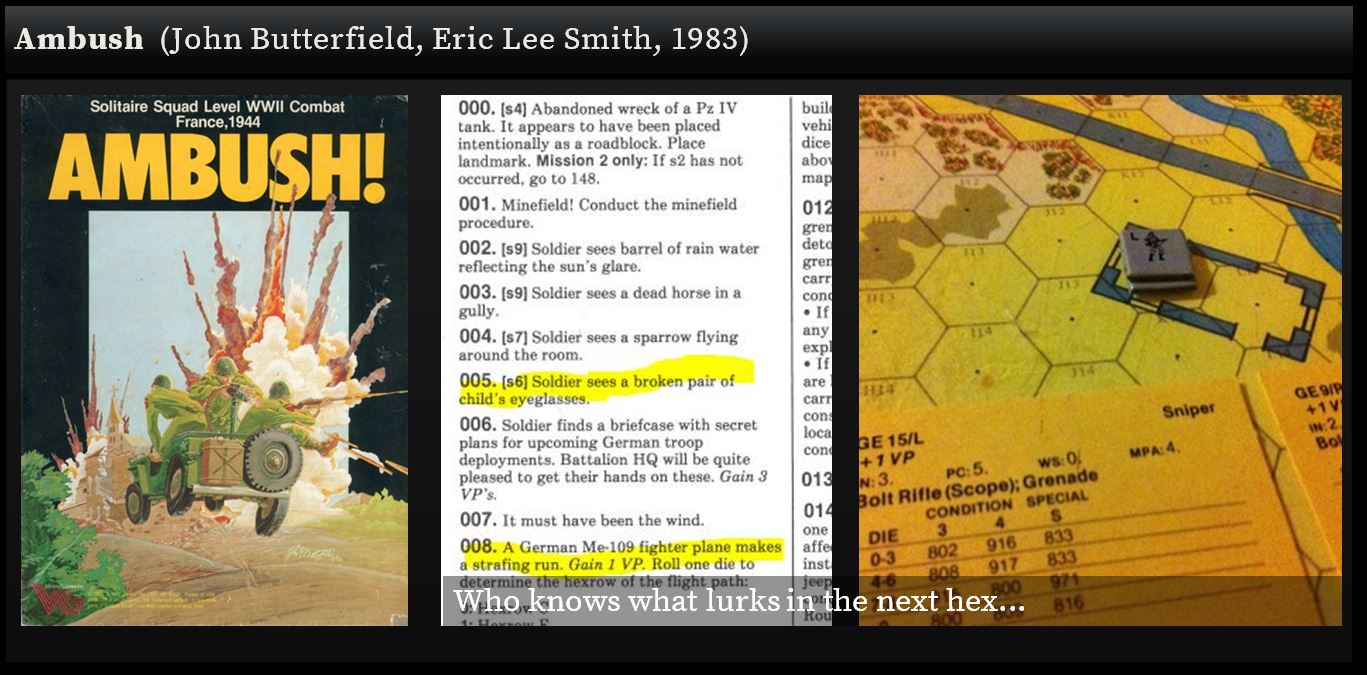
Ambush (1983) was perhaps the first true WWII tactical RPG. You control a squad of individual soldiers with RPG like stats (e.g., ‘initiative’ and ‘perception’). Entering specific hexes can triggered narrative and gameplay events (see illustration above).
Influence #3: Integrate Narrative: Integrate narrative events directly into tactical gameplay for better immersion. Burden of Command extends this via a more general “StoryTeller Engine” that watches your battle and triggers event not only on entering a hex but also on a variety of other game play occurrences like unit actions (shooting, assaulting etc) and changes (morale checks etc).
Influence #4: RPG Creates an Immersive Battlefield: Deepen the experience of battleship leadership by making the player care about your men through classic RPG mechanisms (they persist and gain experience across battles). Making you think twice about sending those sprites (“That’s Dearborn!”) up that hill.

In Combat Commander (2006; GMT Games) chaos is pervasive. The actions available to you (move, shoot, rally, etc) are strictly limited to the random cards you have drawn! Even what specific turn the scenario will end on is carefully randomized. A large set of randomly drawn events (e.g., “Sniper!”) spice up gameplay.
Influence #5: Pervasive Chaos Creates Depth: Pervasive chaos makes interesting decisions about uncertainty equally pervasive (e.g., “does my opponent have a Fire card left? Will the scenario end this turn?”). Burden of Command will emphasize leadership as a means to manage that chaos (the dreaded “RNG” in digital parlance).
Influence #6: And Deeper Emergent Stories: A larger set of random events deepens “emergent storytelling” and adds unexpected “plot” twists and turns in gameplay.
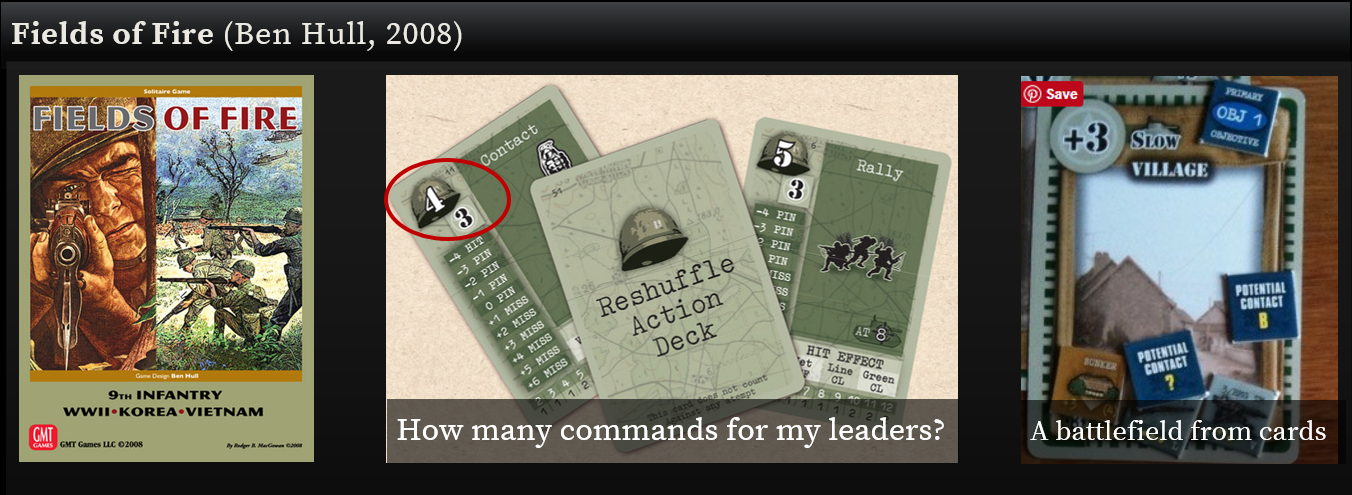
Fields of Fire (2008, GMT Games) designer Ben Hull served in the USMC as an infantry officer and brings that experience to bear in a novel design emphasizing the authentic details of tactical leadership. Leaders receive randomized amounts of Commands to both activate and give squads specific actions (more, fire, rally, take cover etc).
Influence #7: Leadership is Always Limited Choice: Leadership should be a constant question of tough choices. For example, do I spend my limited command to rally or move forward to seize the objective before the enemy recovers from suppression? I can’t do both. A classic Sid Meier-ian “meaningful choice.”

In Band of Brothers (2011, Worthington Publishing) firepower does not so much break or cause casualties to enemy units as suppress. Meaning that a suppressed unit is uncertain to act when requested (you roll a dice versus its current level of suppression to see if it acts). To finish an enemy typically requires more than firepower, you close with a suppressed unit to catalyze surrender. Which leads to realistic infantry tactics know as the “4Fs,” namely: “Fire, fix, flank, and finish.”
Influence #8: Suppression is King: Suppression is a key concept for the psychological battlefield, leading to yet more command and control chaos (will this suppressed unit actually act?). Burden of Command explicitly uses leaders to mitigate the strong effects of suppression. In other words, experienced men who trust and respect your leadership will often overcome their suppression.
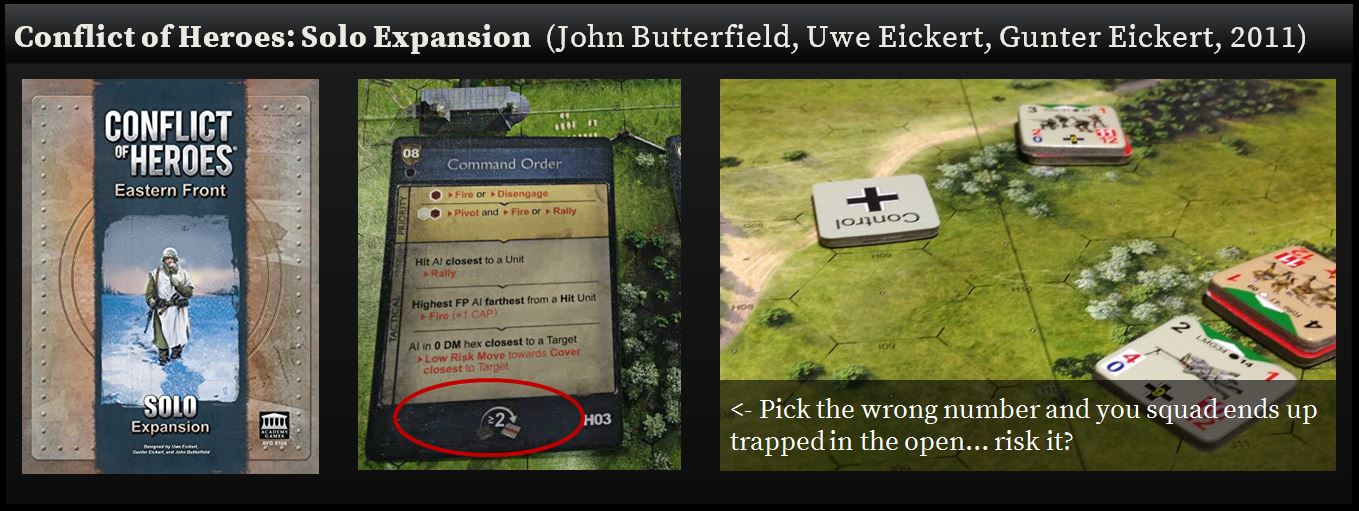
Conflict of Heroes Solo Expansion (2015, Academy Games) besides its remarkable and dynamic AI, this expansion brings the “Push Your Luck” board game mechanic to tactical play by making when a given unit’s turn ends highly uncertain. Each single unit action ( a single hex move or fire) a card is drawn to see if the unit’s turn ends. Leading to powerful “push your luck” decisions like “do I try to make it that cover first, or play it safe and take my shot now, leaving myself exposed if the shot fails and my turn unexpectedly ends?”
Influence #9: Gamble on the Battlefield: “Push Your Luck” is a deeply appealing gambling like mechanism and adds yet more chaos (noticing a theme here? Burden of Command intends to adopt chaos with a vengeance but use leaders to manage and mitigate its effects. Don’t play Burden of Command if you want to be in control, play it if you want to lead in the face of chaos! Chaos makes for interesting decisions and good battlefield emergent stories!).

Fire team: Red Eclipse (TBA, Lock n Load Publishing) is a re-design of the original Fire Team game by our scenario lead Steve Overton (“Mad Russian”), who not only served in US Army but is a famed digital game scenario designer (e.g., Combat Mission). Leaders play a pivotal role in the game with their state determining how many commands they can give each impulse during the turn.
Influence #10: TBD: Steve’s design has only recently gone public and he has promised me a game when he returns from his current vacation. Given his role in Burden of Command and my deep respect for his talents I am certain Red Eclipse will have a strong influence over the design evolution of Burden of Command.
Putting it All Together
The following illustration summarizes how Burden of Command defines battlefield leadership. In a nutshell, the battlefield is a psychological landscape where Chaos creates interesting decisions (as well as emergent stories) that leadership mitigates through Directing (via an always too scare pool of command), Motivating (leaders influence morale checks, push your luck, suppression and more), and Preserving (RPG like preserving of your valued men across battles as they gain experience and you gain empathy).
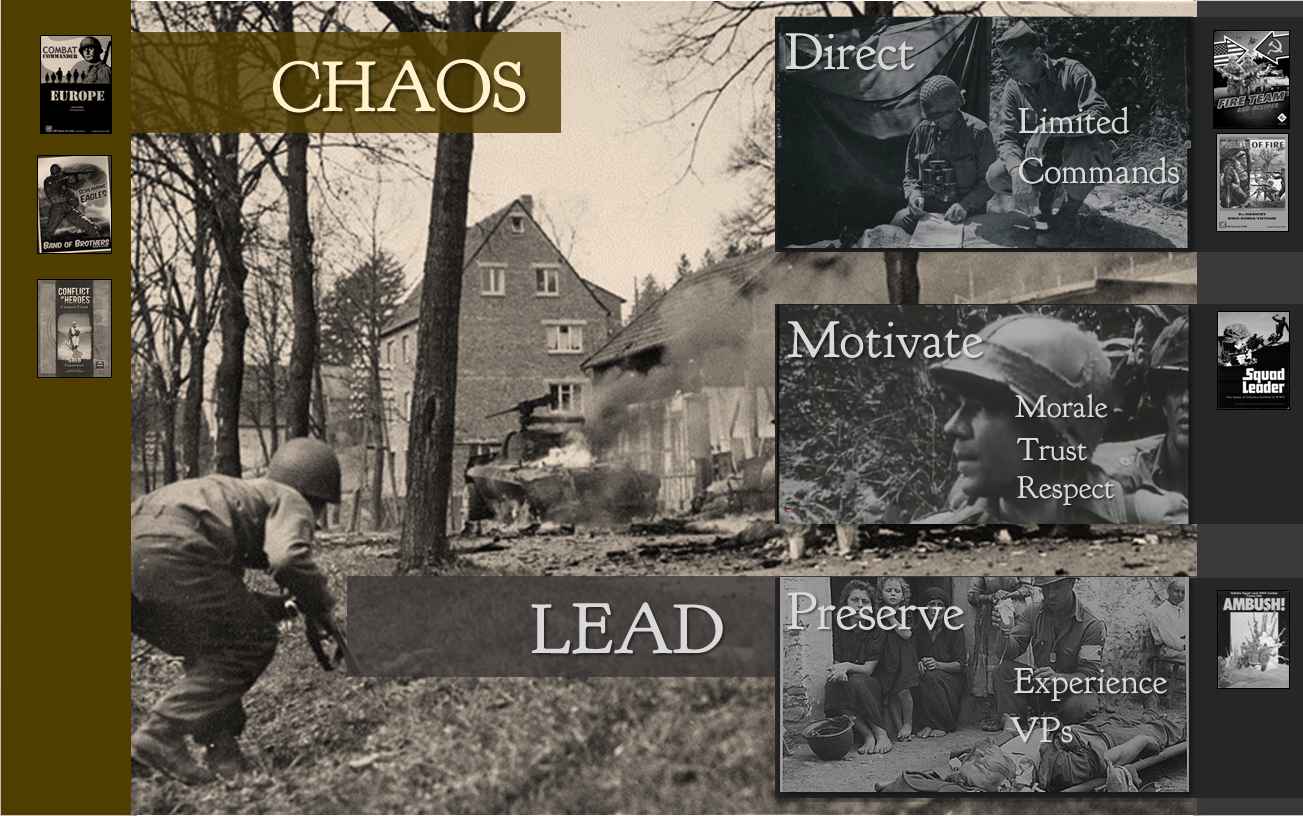
We would love to hear from you now! What are your favorite board/wargames? Which one of their mechanics you value most, and why? Do you think a particular aspect of modern conflicts has been underrepresented in wargames? And, most importantly, do you really need a formal question to talk about your favorite games?
Comments are available, social buttons are below, you know the drill!
| Follow @BurdenOfCommand |




